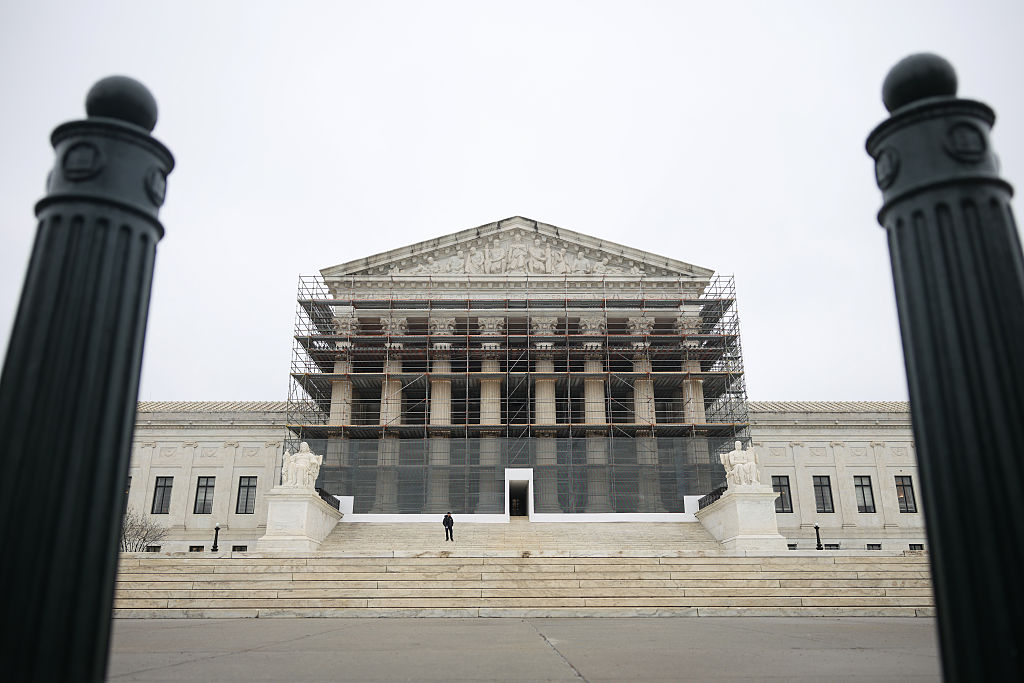Justices make short work of procedural problems in litigation about tainted baby food


The justices did not have a lot to say on Tuesday morning when they heard from the lawyers in The Hain Celestial Group v Palmquist, as the entire argument occupied less than 45 minutes. The consistent tone of the justices’ comments suggests that the justices will affirm the decision of the lower court.
Hain is a case about litigation strategy. It started when a mother (Sarah Palmquist) who lives in Texas believed that toxic metal in baby food had harmed her child. The attorneys that she consulted formulated a lawsuit that would take place in the Texas state courts, reflecting the general view that state courts are more favorable to plaintiffs in this kind of litigation than federal courts (especially in Texas). Not only did they file the suit in a state court (rather than a federal court), but they also sued two different entities: the manufacturer (The Hain Celestial Group), which is based in Delaware; and the grocer from whom she bought the baby food (Whole Foods), which is based in Texas. If she had sued only Hain, it could have transferred the case to federal court under the rules for federal “diversity” jurisdiction, which apply to cases in which the litigants are from different states. The inclusion of the Texas company (Whole Foods) as a second defendant in the litigation eliminated diversity, so the case should have stayed in state court.
The case is before the Supreme Court because Hain transferred the case to federal court anyway and persuaded the federal trial court that the lawsuit against Whole Foods (the Texas company) was so feeble that the court should dismiss Whole Foods from the litigation. With Whole Foods dismissed, the trial court proceeded with a trial involving diverse parties: Palmquist (the Texan) and Hain (from Delaware). At that trial, Hain prevailed, with the trial court rejecting Palmquist’s claims that problems with the baby food harmed her child.
But when the case went up on appeal to the U.S. Court of Appeals for the 5th Circuit (the federal appeals court for Texas), that court decided that it was a mistake to dismiss Whole Foods from the litigation. With Whole Foods back in the case, the parties were no longer diverse, so the 5th Circuit threw out the trial court’s verdict and sent the case back to the state courts to give Palmquist a chance at a trial against both defendants.
The question before the Supreme Court is whether the 5th Circuit got it right. Pretty much everything that was said in the short argument on Tuesday suggests that the Supreme Court is going to agree with the 5th Circuit.
The basic problem for Hain is that the justices – or at least those who had much to say – seem to hold two opinions that are fatal to the manufacturer’s case: First, that it is legitimate to structure the case so that it would stay in state court; and second, that it is unfair to deny the mother the chance to have the trial she wanted, in a state court against her two chosen defendants.
Things started off badly for Sarah Harrington (arguing for the Hain) when Justice Sonia Sotomayor complained that Harrington was “ignoring” that “this plaintiff wanted to be in state court,” and that the improper removal “deprived [her] permanently of [her] tactical opportunity to try this in state court.” When Harrington argued that this shouldn’t really count as prejudicial, Sotomayor interjected that “[p]arties don’t fight removal simply because they want to. They see tactical advantages in remaining in one forum versus another.”
When Sotomayor finished, Justices Amy Coney Barrett and Neil Gorsuch piled on, both commenting on the perceived “unfairness” of the district court’s treatment of Palmquist. For Gorsuch, courts should do something “about the fact that the problem here was created by your client through an improper removal? I mean, in terms of fairness, … your hands aren’t exactly clean here. … [T]he plaintiff’s choice of forum was effectively denied through an improper removal … by your client.”
At that point, Justice Elena Kagan joined the conversation, pressing the point that the plaintiff (the mother in this case) typically is regarded as “the master of her complaint.” For Kagan, Palmquist “clearly structured a suit in order to bring it in state court,” and she joined these two parties perfectly legitimately, in order to have the suit in state court, rather than in federal court. … And the effect of this district court misjudgment was … that the suit was tried in the wrong place from the plaintiff’s point of view. And the plaintiff’s point of view is the thing that should matter because the plaintiff is the master of her complaint.
Probably the most telling thing about the argument is that the justices had little or nothing to say to Russell Post (the attorney representing the mother). As a matter of practice, justices that are expecting – or seriously considering – voting against counsel typically ask questions to see if there is anything on that side of the case that they are missing. When the bench asks almost nothing – as they did here – it pretty strongly suggests a settled determination to rule in favor of the mother. With none of the justices standing up for that side at the argument, the result could come even before the turn of the year.
Posted in Court News, Featured, Merits Cases
Cases: The Hain Celestial Group, Inc. v. Palmquist